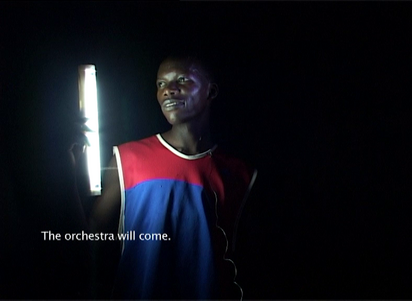The wallpaper by Andy Hope 1930 (alias Andreas Hofer) was created in the context of his solo exhibition at the Sammlung Goetz in 2009. It depicts 27 of the paintings that were in the collection at the time.
In the show, it served as a backdrop for the hanging of these exact paintings. The staging had an astonishing effect, as it opened up a new spatial experience. The artist called his visually stunning installation Infinity Crisis. The title refers to the eponymous painting, which he created as an allusion to the comic series Crisis on Infinite Earths. The series involves a multiverse in which different versions of planets, their inhabitants and their superheroes exist.
Q & A with Andy Hope 1930
The wallpaper INFINITY CRISIS was created for your solo exhibition at the Sammlung Goetz in 2009. It depicts several individual paintings that were in the collection at that time. How did you come up with the idea and why did you choose the medium of wallpaper?
The INFINITY CRISIS room consists of a series of 27 works, repeated in a standardised grid to make a “wallpaper.” Because of its repetitive character, the wallpaper has the effect of camouflaging the original works hung on it. No longer fully visible, it’s only on closer inspection that their materiality is revealed—a presence that stands out, discreetly, from the reproductions. Individual works such as Trembling on the Brink of Infinity are like mini-narratives or fragments of an external grand narrative that seems impenetrable and incomprehensible. The paradoxical transformation of this abundance into emptiness leads to this result. The works lose their individual character; instead, one perceives the totality of a single space. The room can also be presented with just the wallpaper. (Or together with objects). As with WORLD WITHOUT END spaces or chapters emphasise and structure the labyrinthine nature of my work, INFINITY CRISIS develops as a “crisis of infinity”.







